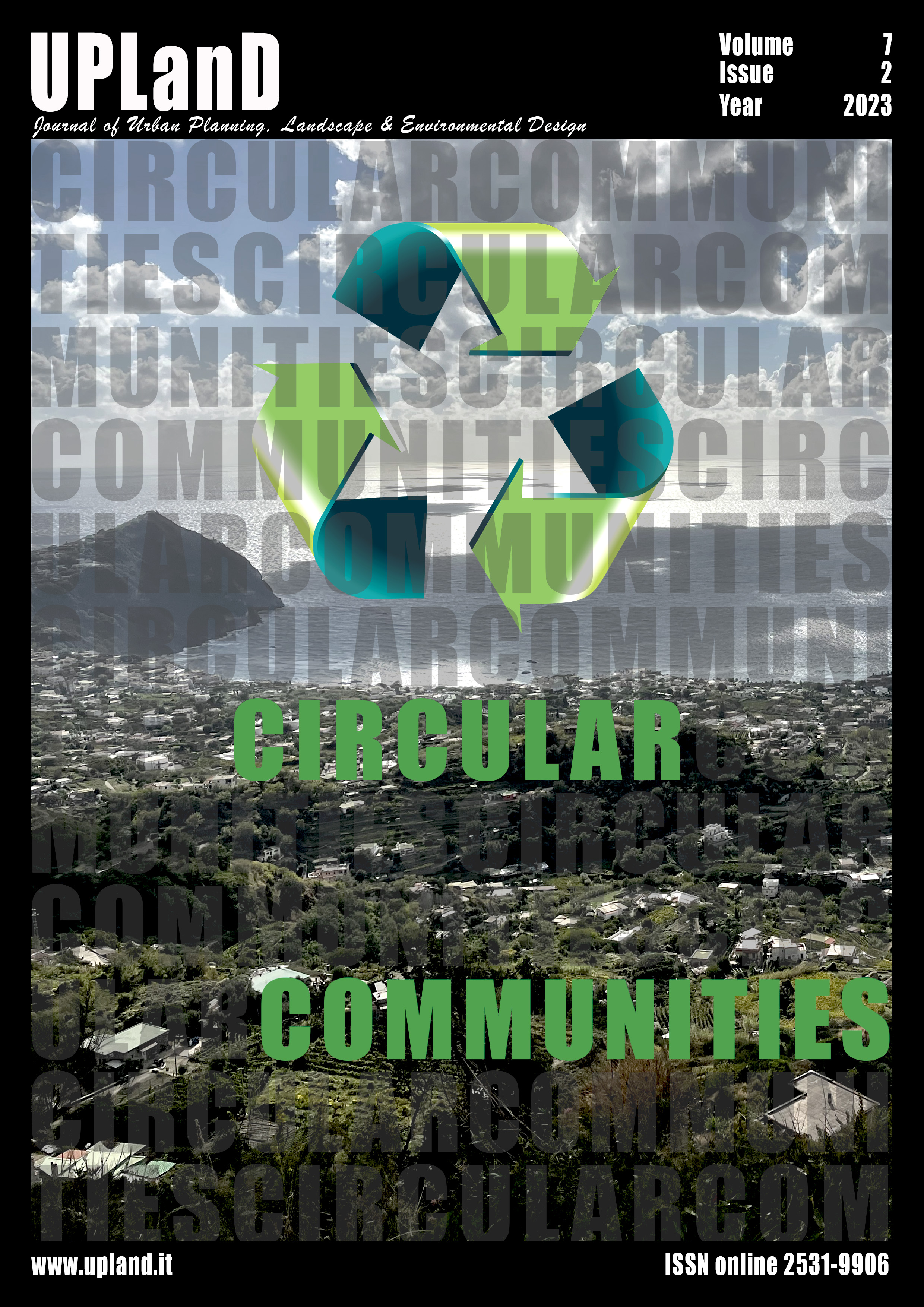Green infrastructure and urban design as an adaptation strategy
Main Article Content
Abstract
The essay intends to spread the scientific importance of the relationship between environment and built space, focusing on the green space of the city that conceived as a green infrastructure (Green Infrastructure GI) can contribute to improving the quality of natural capital, to the well-being of men and ensuring biodiversity and improving urban resilience to extreme phenomena. In particular, the aim is to deepen the meaning of the term GI, an analysis of the policies that encourage and enhance its use. The intention is to extrapolate the fundamental characteristics including the multifunctional aspect, which attributes the ability to improve ecosystem services and therefore contain the vulnerability and increase the resilience of the urban system. Environmental design can define the boundaries and determine limits and goals related to the complex relationship between inhabitants and the environment and solve it in the valorization of GI. Starting from these considerations it tries to answer how governance policies at the local level acknowledge the importance of the GI, and through some contemporary examples an explanation of the urban project strategies that allow their applicability in response to the challenges of the climate changes.
Downloads
Article Details

This work is licensed under a Creative Commons Attribution-NonCommercial-NoDerivatives 4.0 International License.
Authors who publish with this journal agree to the following terms:- Authors retain copyright and grant the journal right of first publication with the work simultaneously licensed under a Creative Commons Attribution License that allows others to share the work with an acknowledgement of the work's authorship and initial publication in this journal.
- Authors are able to enter into separate, additional contractual arrangements for the non-exclusive distribution of the journal's published version of the work (e.g., post it to an institutional repository or publish it in a book), with an acknowledgement of its initial publication in this journal.
- Authors are permitted and encouraged to post their work online (e.g., in institutional repositories or on their website) prior to and during the submission process, as it can lead to productive exchanges, as well as earlier and greater citation of published work (See The Effect of Open Access).
References
Bertoldini, M., Campioli, A. (Eds.) (2009). Cultura tecnologica e ambiente. Novara.
Boeri, A., Fini, G., Gaspari, J., Gianfrate, V., & Longo, D. (2018). Bologna città resiliente: dal piano di adattamento alle azioni locali. TECHNE: Journal of Technology for Architecture & Environment, 15.
Climate Change Adaptation Plan for Barcelona Metropolitan Area 2015–2020 (Pla d’adaptació al Canvi Climatic de l’Àrea Metropolitana de Barcelona). Available online: http://www3.amb.cat/repositori/PUBLICACIONS/SOSTENIBILITAT/Pla_adaptacio.pdf
Copenhagen Climate Adaptation Plan. (2011). Available online https://international.kk.dk/artikel/climate-adaptation
D’Ambrosio, V., Leone, M.F. (2017). Progettazione ambientale per l’adattamento al Climate Change. Modelli innovativi per la produzione di conoscenza. CLEAN, Napoli.
Davies, C., Hansen, R., Rall, E., Pauleit, S., Lafortezza, R., De Bellis, Y., ... & Tosics, I. (2015). Green infrastructure planning and implementation. The status of European green space planning and implementation based on an analysis of selected European cityregions. GREEN SURGE PROJECT, Deliverable, 5.
European Environment Agency (2015). Exploring nature-based solutions: The role of green infrastructure in mitigating the impacts of weather- and climate change-related natural hazards. Publications Office, Luxembourg.
Hansen, R., Rall, E., Chapman, E., Rolf, W., Pauleit, S. (2017). Urban Green Infrastructure Planning: A Guide for Practitioners. GREEN SURGE, pag. 12. Available online http://greensurge.eu/working-packages/wp5/
Lafortezza, R., Davies, C., Sanesi, G., & Konijnendijk, C. C. (2013). Green infrastructure as a tool to support spatial planning in European urban regions. iForest-Biogeosciences and Forestry, 6(3), 102. doi: 10.3832 / ifor0723-006
Losasso, M. (2016), Climate risk, Environmental planning, Urban design. UPLanD-Journal of Urban Planning, Landscape & environmental Design, 1(1), 219.
Board, Millennium Ecosystem Assessment. (2005). Ecosystems and human well-being: desertification synthesis.. World Resources Institute, Washington, DC.
Mussinelli, E., Tartaglia, A., Bisogni, L., Malcevshi, S. (2018), Il ruolo delle Nature-Based Solutions nel progetto architettonico in “Techne Journal of Technology for Architecture and Environment”, 15, FU Press, Firenze, pp. 116-123.
Oke, T. R., Mills, G., Christen, A., & Voogt, J. A. (2017). Urban climates. Cambridge University Press.
Rigillo, M. (2016). Infrastrutture verdi e servizi eco-sistemici in areea urbana: prospettive di ricerca per la progettazione ambientale, Techne Journal of Technology for Architecture and Environment,11, pp.59-65.
Walker, B., Holling, C. S., Carpenter, S., Kinzig, A. (2004). Resilience, adaptability and transformability in social–ecological systems. Ecology and society, 9(2). doi: 10.5751/ES-00650-090205.

